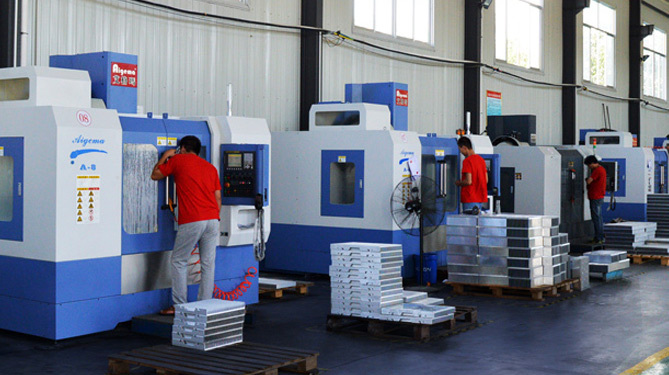Technology of Aluminum Profile Radiator
Time:
2019-08-27
For aluminum radiator, some products with small size and symmetrical shape are relatively easy to produce. Most radiator profiles are flat and wide, with large overall dimensions, and some are asymmetric. The groove depth width ratio between radiator fins is large, which makes it difficult to produce.
For aluminum radiator, some products with small size and symmetrical shape are relatively easy to produce. Most radiator profiles are flat and wide, with large overall dimensions, and some are asymmetric. The groove depth width ratio between radiator fins is large, which makes it difficult to produce. The radiator profile can be successfully produced only through the coordination of ingot casting, mould and extrusion process. Alloys used to extrude radiator profiles must have good extrudability and thermal conductivity. Generally, 1A30, 1035 and 6063 alloys are used. At present, 6063 alloy is widely used because it has good mechanical properties in addition to good extrudability and thermal conductivity.
The production of aluminum alloy radiator profiles should start from the aspects of ingot quality, mold material and design, reduction of extrusion pressure and extrusion process.
The key to the successful extrusion of radiator profiles is that the die design should be reasonable and the manufacturing should be accurate. Generally, the ingot shall not be directly squeezed onto the mold working belt. For the flat and wide comb shaped radiator profile, a guide die with smaller middle and larger two sides is designed to make the metal flow to both sides, reduce the extrusion force on the working belt of the die, and make the pressure distribution uniform. Due to the large wall thickness difference of the radiator profile section, their differences should be maintained when designing the mold working belt, that is, the working belt should be especially enlarged where the wall thickness is large, which can be as large as 20mm - 30mm, while the position of the tooth tip should break through the convention and reduce the working belt to the minimum. In short, it is necessary to ensure the uniformity of metal flow everywhere. For the flat wide radiator, the thickness of the die shall be increased appropriately to ensure a certain rigidity of the die. The thickness increase is about 30% - 60%. The mold should also be made very carefully. The empty cutter should be symmetrical from top to bottom, from left to right, and from the middle. The machining error between teeth should be less than 0.05mm. Large machining errors are likely to cause tooth deflection, that is, the thickness of the radiator is uneven, and even the tooth breakage may occur.
For the section with mature design, it is also a better method to use inlaid alloy steel die, because the alloy steel die has better rigidity and wear resistance, is not easy to produce deformation, and is conducive to the forming of radiator profiles.



